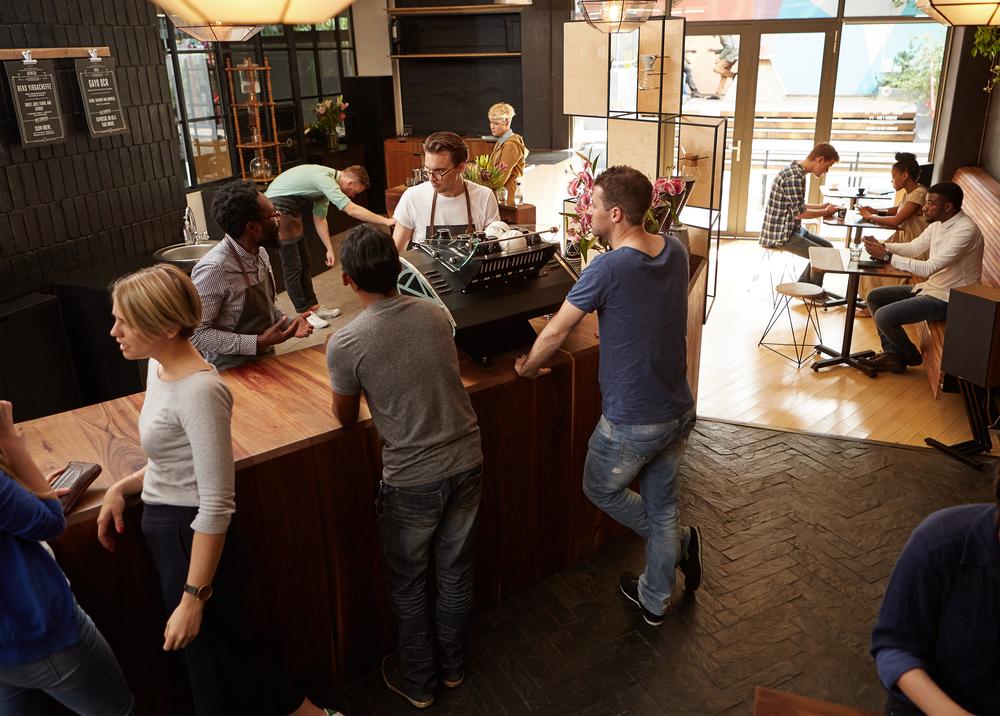MENU
Start
- Best Small Business Loans for 2024
- Businessloans.com Review
- Biz2Credit Review
- SBG Funding Review
- Rapid Finance Review
Our Recommendations
- 26 Great Business Ideas for Entrepreneurs
- Startup Costs: How Much Cash Will You Need?
- How to Get a Bank Loan for Your Small Business
- Articles of Incorporation: What New Business Owners Should Know
- How to Choose the Best Legal Structure for Your Business
Our Guides
- Business Ideas
- Business Plans
- Startup Basics
- Startup Funding
- Franchising
- Success Stories
- Entrepreneurs
Small Business Resources
Grow
- The Best Credit Card Processors of 2024
- Clover Credit Card Processing Review
- Merchant One Review
- Stax Review
Our Recommendations
- How to Conduct a Market Analysis for Your Business
- Local Marketing Strategies for Success
- Tips for Hiring a Marketing Company
- Benefits of CRM Systems
- 10 Employee Recruitment Strategies for Success
Our Guides
- Sales & Marketing
- Finances
- Your Team
- Technology
- Social Media
- Security
Small Business Resources
Lead
- Best Business Phone Systems of 2024
- The Best PEOs of 2024
- RingCentral Review
- Nextiva Review
- Ooma Review
Our Recommendations
- Guide to Developing a Training Program for New Employees
- How Does 401(k) Matching Work for Employers?
- Why You Need to Create a Fantastic Workplace Culture
- 16 Cool Job Perks That Keep Employees Happy
- 7 Project Management Styles
Our Guides
- Leadership
- Women in Business
- Managing
- Strategy
- Personal Growth
Small Business Resources
Find
- Best Accounting Software and Invoice Generators of 2024
- Best Payroll Services for 2024
- Best POS Systems for 2024
- Best CRM Software of 2024
- Best Call Centers and Answering Services for Busineses for 2024
Our Recommendations

Online only. Expires 4/27/2024
11 Beloved Brands Gone Forever

Table of Contents
Like all things in life, brands come and go. While some companies have risen from the ashes to make a triumphant comeback – Hostess Brands being one of the most famous and recent examples – others are gone for good, no matter how popular they once were. Other brands that were once mammoth retailers, such as Tower Records, ultimately didn’t survive as brick-and-mortar stores but have pivoted to e-commerce.
Here are 11 formerly huge brands that have closed their doors, whether that’s just their physical doors or the entire business.
Beloved brands that went out of business
Pan Am
The airline was founded in 1927 and originally provided mail and passenger service between Florida and Cuba. The airline expanded from there, reaching its peak in the late ’60s and early ’70s when it carried more than 6 million passengers a year to 86 different countries. However, by the ’80s, the company’s profits had weakened, and in 1991, the airline officially shut down. It reemerged in 1997 but lasted for just one year before closing again.
Oldsmobile
A brand of General Motors, Oldsmobile produced more than 35 million cars in its 107-year history. Despite its popularity over the years, GM announced in 2000 that it would be phasing out the brand, and four years later, the last Oldsmobile, an Alero, rolled off the factory assembly line.
Woolworth
Founded in 1879, Woolworth grew to become the world’s largest department store chain in 1979. As the company continued to expand and add specialty retailers, the Woolworth department stores began to suffer. The chain initially closed 400 of its locations in 1993; the rest of them followed four years later. You can still see the famous five-and-dime store in Mexico, though. In 1956, Woolworth opened several Mexican locations, and when the company closed its U.S. stores, it sold the Mexican locations to its biggest competitor, Del Sol.
Palm
While the life of Palm Computing wasn’t as long as that of other iconic brands, it was just as impressive. Launched in 1992, the company really took off four years later with the introduction of the PalmPilot. The personal digital assistant was an instant success that led to the company’s purchase by 3Com in 1997. Three years later, Palm went public with an opening-day valuation of $53 billion. However, as smartphones began to rise in the mid-2000s, consumer interest in Palm diminished. After announcing first-quarter losses of $22 million in 2010, the company was purchased by HP for $1.2 billion. At that time, all Palm devices were rebranded as HP.
TWA
Trans World Airlines, or TWA, was founded in 1930 with the merger of Western Air Express and Transcontinental Air Transport. The airline flourished in the ’30s and ’40s under the direction of billionaire Howard Hughes. Its downfall can be traced back to the ’80s, when it was acquired by Carl Icahn, who pushed for the company to turn private. The move saddled the company with debt and eventually led to TWA filing for bankruptcy in both 1992 and 1995. The TWA brand eventually shut for good when it was acquired by American Airlines in 2001.
Kenner Products
Founded in Cincinnati in 1947 by brothers Albert, Phillip, and Joseph Steiner, Kenner Products was a toy company best known in its early years for producing the Bubble-Matic Gun and the Easy-Bake Oven. While the company was purchased by General Mills in 1967, the brand continued on, and its profits soared in the ’70s and ’80s thanks to the success of its line of Star Wars toys. The brand was acquired in 1987 by Tonka, which was purchased by Hasbro in 1991. In the following years, the Kenner brand was folded into the Hasbro toy lines, and in 2000, the name was erased for good when the Cincinnati operations officially closed.
Tower Records
The first Tower Records store opened in 1960 in Sacramento, California. The chain of music stores saw rapid growth in the coming years, expanding throughout the state and the rest of the U.S. By the mid-’90s, there were more than 200 Tower Records stores around the world, generating $1 billion a year in sales. But as larger retailers like Best Buy and Walmart began selling music and downloadable music started to take hold, Tower Records’ profits dwindled. The company first filed for bankruptcy in 2004 and then again in 2006, which eventually led to the retailer being liquidated and shut down for good – at least as a physical store.
More than 14 years after closing all of its locations, Tower Records was revived as an online store. You can search the website to find over 35,000 titles on vinyl records, CDs and cassette tapes. You can also purchase exclusive artist merchandise.
Borders
The Borders bookstore chain launched in 1971 in Ann Arbor, Michigan. Over the years, the company grew to more than 650 stores in the U.S. and abroad. Despite its popularity, company profits began to decline in 2001, and by 2010, with e-books at the height of their popularity, Borders was losing $185 million a year. The following year, Borders filed for bankruptcy and the liquidation process began. The chain eventually closed all its stores and sold its website to rival Barnes & Noble.
Henri Bendel
Henri Bendel, an upscale brand known for its designer purses and shoes, was founded in 1895. In 1913, the brand opened its flagship store on Fifth Avenue in New York City. In 1985, the company was acquired by L Brands and expanded into 11 other states. But in 2019, L Brands decided to shut down the brand’s website and remaining stores because of poor sales.
Pier 1 Imports
Founded in 1962, Pier 1 Imports specialized in home goods like furniture and decor. The company got its start in San Mateo, California, before expanding to other states. Pier 1 remained popular for many years, but it eventually started to struggle with competition from stores like Amazon, Walmart and TJ Maxx. In early 2020, the company announced it was closing its remaining stores because of declining sales after unsuccessfully trying to obtain a buyer. That October, the company relaunched as an online store, but its stores remain shuttered.
Sports Authority
Sports Authority was a sporting retailer that, at its height, operated more than 400 stores across the U.S. At one point, the company was the largest sporting goods retailer in the country. However, Sports Authority struggled to maintain its sales amid competition from other retailers. The company filed for bankruptcy in 2016 and closed its remaining stores.
How to build a brand with staying power
Of course, many beloved brands go out of business only to reemerge later. Hostess Brands is a good example of this: After filing for bankruptcy in 2012, the company went public once again in 2016.
The Toys “R” Us brand saw a revival in 2021 after WHP Global took it over and opened a store in the American Dream mall in New Jersey. The label also has a digital store and a partnership with Macy’s for shop-in-shop stores. WHP intends to launch 400 of those spaces inside Macy’s stores during 2022.
Your business doesn’t have to go through these kinds of ups and downs. Here are a few tips on how to build a brand with true staying power:
- Be consistent. Unreliable brands will not stand the test of time. You should provide the same high-quality experience for your customers every time they come in contact with your company.
- Listen to your customers. Companies that stop listening to their customers and what they want are bound to fail. Stay in close contact with your customers so you understand what they are looking for. Use techniques like social listening and customer surveys to gather feedback and insights on what your customers want.
- Strive to be the best. You should never stop working to be the best in your industry. Think about what sets your brand apart, and lean into that.
Jamie Johnson contributed to the writing and reporting in this article.
















